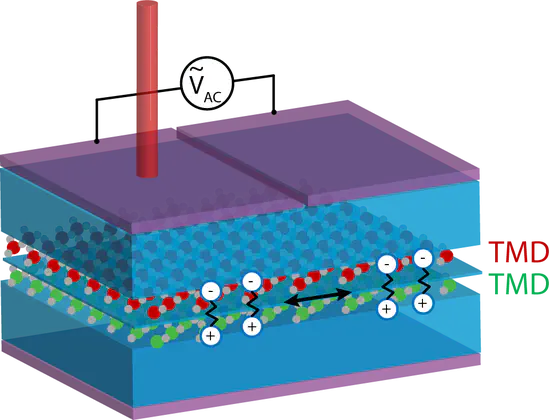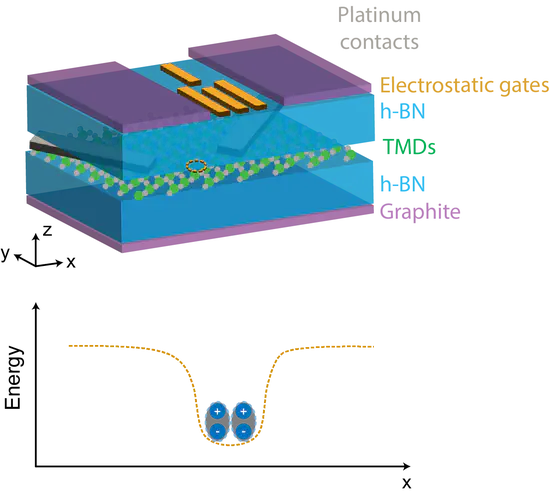Research
Our research lies at the intersection of optics, transport, and two-dimensional (2D) materials and heterostructures. We are currently focusing on using semiconducting transition metal dichalcogenide (TMD) and their strong light-matter interactions to probe quantum states of matter and control their spin and valley degrees of freedom. The lab's direction will range from fundamental correlated states to creating useful valleytronic devices.

Valleytronic quantum devices
TMDs have strong spin-orbit coupling and result in two equivalent K valleys but with opposite spin characteristics. By breaking time-reversal symmetry, the two valleys can become inequivalent in population or in energy and can be used for storing information.

Novel optical detection of correlated states in two-dimensional van der Waals heterostructures
2D van der Waals materials can be stacked to create arbitrary heterostructures that exhibit exotic properties. These materials can also have a relative twist angle to create a spatially varying potentials from the resulting moiré pattern.

Quantum light and Bose-Hubbard simulator
Spatially patterned electrostatic gates can be used to create a potential trap for charged particles. When the spatial dimensions become small, the trap will behave like a quantum dot with quantized levels.